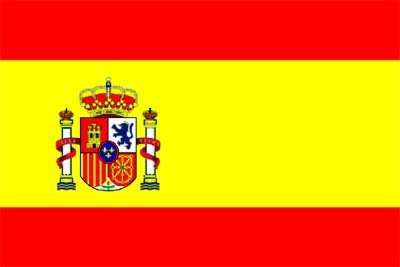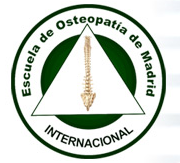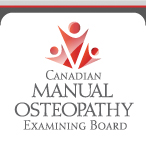Kaltenborn Method
Freddy Kaltenborn was a Norwegian physical therapist who dedicated, during the 40s, to treatment of patients with spine disorders. He was frustrated with the results obtained by using the massage combined with the mobilization and manipulation along with active and passive movements he had learned from conventional physical therapy training. This is why he turned to the work of Dr. James Mennel and Dr. James Cyriax both orthopedic medicine experts dedicated to the physical therapists training.
Kaltenborn went to London in the early 1950's to learn the joint mobilization techniques of Dr. Mennell and Dr. Cyriax. Upon his return to Norway he was approved and endorsed by the Oslo's Physical Therapy Association to teach the first course on Cyriax's method in Norway in the year 1954. This fact significantly changed the vision the Norwegian medicine had of the Manual Therapy, and they approved its inclusion in the traditional medical practice in 1958.
The first physical therapists completing their studies in the Dr. Cyriax method formed the Norwegian Manipulation Group.
But, in the beginning, the spine evaluation and treatment method Cyriax, Mennell and the Norwegian Manipulation Group used was regional, and therefore non-specific. The techniques were not directed towards a specific spinal segment or structure. That is why, between the late 50s and the early 60s, Kaltenborn studied at the British School and at the London Osteopathy College with professor Alan Stoddard. He was an osteopath who had developed more specific techniques for the spine treatment. Along with Stoddard, Kaltenborn selected the osteopathic techniques he would introduce into the Norwegian Manipulation Group.
This way, Kaltenborn worked long time with Cyriax and Stoddard to determine which physical therapy, osteopathy, sports and osteopathic medicine evaluation and treatment tools should be part of the Manual Therapy training program for physical therapists. Kaltenborn's idea was to develop a unique method that would unify the knowledge he had acquired during the previous years, along with his own theories and techniques. That is the way in which "Manual Therapy ad modum Kaltenborn" or "The Kaltenborn method" was created, around the year 1958.
Besides Cyriax's, Mennel's and Stoddard's techniques, Kaltenborn also introduced other important concepts in his method such as the biomechanical principles for the evaluation and treatment, the translatoric joint play movements in relation to the treatment plane, the concave-convex rule, the treatment grades, the tridimensional prepositioning methods, the adjacent joint's protection and the ergonomic principles directed to protect the therapist.
From 1962 on, the Scandinavian medical doctors who had studied in the Manual Therapy training taught by Kaltenborn, created the Nordic Association of Manual Medicine Medical Doctors (NFMM), which would allow spreading the mothod to the rest of the Scandinavian countries. They named Kaltenborn as the training director.
By that time, Kaltenborn had already started working with Olaf Evjenth, a Norwegian physical therapist who had experience with the physical education and the athletic training. He introduced some innovations which completed the Kaltenborn method. Concretely, Evjenth created specialized techniques for muscle stretching and strengthening, also for the coordination training. He also designed more intensive training plans for the patients, and developed programs in which, besides taking care of the pain and the range of movement, the performance was also assessed. Moreover, he modified the exercises specifically for the patient's use at home, with self-mobilization, self-stabilizing and self-stretching. Later, in the year 1990, Evjenth would introduce the symptom alleviation tests, as an injury localizing method and would also improve the symptom provocation tests.
Kaltenborn and Evjenth, along with the Norwegian Manual Therapy Group, also developed additional techniques for self-treatment, and ergonomic equipment (mobilization wedges, fixating belts, etc.) in order to make the treatments more effective and less physically stressing for the physical therapist. In the same way, he combined various techniques so as to obtain better results, leading to the concept of multiple treatment techniques, one of the mainstays in which the concept is based.
This way, the Kaltenborn-Evjenth Concept was presented to the world in the year 1973, coinciding with the International Seminar of Orthopaedic Manual Therapy (ISOMT), founded by Brodin, Cyriax, Hinsen, Stoddard and the own Kaltenborn and Evjenth.
A year later, in 1974, Kaltenborn founded, along with Geoffrey Maitland, Stanley Paris, David Lamb, Gregory Grieve, Brian Edwards and other physical therapists trained in their methods, the International Federation of Orthopaedic Manual Therapy, which nowadays is a World Confederation of Physical Therapy's (WCPT) subgroup, it is also in charge of establishing the training standards of the OMT all around the world.
Special features
The Orthopaedic Manual Physical Therapy OMT is in constant evolution and increasingly has greater influence in the physical therapy practice. Despite this evolution, certain concepts which remain intact in their application exist and they could be considered as characteristic of this kind of physical therapy. These special characteristics, nowadays, are generally accepted in the physical therapy practice.
Biomechanical approach for the evaluation and treatment:
In OMT, the biomechanical principles are essential for the analysis and treatment of the musculoskeletal disorders.
This method uses, both for the assessment as for the treatment, the traslatoric movements of the joint play (especially the traction and gliding) in relation to the treatment plane of the joint, this allows a gentle and effective joint mobilization. This way, the physical therapist determines the type of dysfunction or directs the treatment through the grades of movement and the end feel which he is able to palpate.
The previous tridimensional joint positioning for the mobilization, both in the (actual) resting position or in increasingly closer to the restriction limit positions, allows a greater effectiveness and specificity of the technique, at the same time it improves the patient's feeling during its application.
Besides, the Kaltenborn's Convex-Concave Rule allows determining in a direct way the gliding direction of the joint for the treatment and evaluation in each case.
Technique combination:
The use of several techniques during the same treatment session is one of the concepts which have always been defended in this method, looking for a greater effectiveness. In these techniques we include the self-treatment, previously having instructed the patient, in order to maintain the obtained improvements and so as to prevent recurrences.
Trial treatment and clinical reasoning:
By the term trial treatment we understand that it is a low risk therapeutic proceeding which can be used as an additional proceeding for the evaluation, which can confirm or deny the first diagnosis.
This way, it should be noted that the OMT evaluation is a clinical reasoning process that starts with and broad initial hypothesis which leads to the performing of some tests and analysis to confirm or deny that hypothesis, until a physical therapy diagnosis is found. The clinical reasoning process does not end there, but it continues along the treatment and throughout the re-evaluation, in order to rethink the diagnosis and the therapeutic approach.
Ergonomic principles for the physical therapist:
The Orthopaedic Manual Physical Therapy (OMT) gives great importance to the correct body mechanics of the physical therapist. Therefore, every technique is designed taking this aspect into account, and they also use material such as wedges and fixation and mobilization belts.
Techniques
One of the basic characteristics of the Orthopaedic Manual Physical Therapy (OMT) is the combination of many treatment techniques, even in one same session with the patient. Actually, the method was created, it has developed and it continues developing through the inclusion of new evaluation and treatment techniques which make the system as complete as possible, so it allows the physical therapist to treat any neuro-musculoskeletal dysfunction in his scope.
So, many techniques and concepts which are part of OMT have been designed from the techniques of other methods in manual therapy, or they have been included directly from these other methods but with modifications which have been thought to be appropriate.
The Orthopaedic Manual Physical Therapy (OMT) includes symptom relieving techniques, joint mobilization techniques, soft tissue and neural tissue mobilization techniques, specialized exercise techniques, self-treatment, etc. Among all these techniques, we can highlight the following ones, maybe because they are the most characteristic ones.
Joint Mobilization:
The joint mobilization as evaluation and treatment method for the joint dysfunctions is a main part of the OMT.
The aim of the joint mobilization is to restore the joint play, in order to normalize the rolling and gliding of any joint, which are necessary for the active normal and non-painful movement
Therefore, the OMT uses translatoric movements of the joint play, this is, the traction, gliding (together with traction) and the compression (usually to provoke symptoms), in relation to the treatment plane of the joint. Through the end-feel and the amount of movement which can be palpated with the traction and the gliding, the patient's injury can be assessed, and can also be treated in consequence, by moving the joint in the correct direction and using the different grades of movement, depending on the treatment's aim.
To know which the correct direction in which the gliding for evaluation and tratment is, Kaltenborn established the Concave-Convex Rule, it allows easilly deducing in which direction the limitation is and, therefore, in which direction the treatment has to be performed.
Besides, the method considers, before the application of any technique, the tridimensional placing of the joint. Positioning the joint this way makes our treatment more effective, depending on the mobilization's aim.
All of these aspects make an easy, safe and effective treatment method from the joint mobilization techniques, always if it is indicated and correctly applied.
Manipulation:
The manipulation can be considered as an advanced way of joint mobilization, because it shares the same biomechanical principles. So, in OMT, the manipulation consists on a linear translatoric movement (traction or gliding) performed in the joint's resting position, through a high velocity, low amplitude and low force thrust. These linear translatoric thrust techniques are technically more difficult to perform, but equally effective and much safer than the rotatory thrusts that have been traditionally performed.
The manipulations are performed with the aim of obtaining joint surface separation and restoring the gliding component in joints that, even if they show an appropriate end-feel, they are hypomobile when examining them. It is a very effective technique if it is performed correctly and if it is indicated, but in the opposite cases it also carries serious injury risk.
Because of the risk it can carry, and because of the expertise grade it requires for its execution, the manipulation training, mainly in the spine, in OMT it is for those physical therapists who have demonstrated their experience in the joint mobilization. However, basic low risk and equally effective manipulations exist, and they can be taught even in the pregraduate physical therapy studies. Kaltenborn has recently compiled these techniques in the Manual Physical Therapy: Manipulation-Traction of the Spine and Extremities book.
Stretching and self-stretching:
The stretching and self-stretching are mobilization techniques of the soft tissues and they are integrated inside most of the physical therapy treatments. However, it is frequent to observe that these stretching exercises are not correctly performed, and they lose effectiveness and even, in the worse cases, provoke injuries in other places (for example, hypermobilities in vertebral segments).
Therefore, Evjenth created a new stretching methodology, based on the patient's and therapist's ergonomics and care. A stretching method which integrates Proprioceptive Neuromucular Facilitation (PNF) techniques in order to facilitate the muscle's lengthening and it also uses physical therapy equipment, such as the fixation belts, in order to allow an analytic stretching of each muscle adapted to the patient's pathological process.
Functional massage:
The functional massage is a physical therapy technique, introduced by Evjenth in the Orthopaedic Manual Physical Therapy (OMT), which combines the passive mobilization of the joints and of the functionally related muscles. It is a massage technique that simultaneously associates the muscle compression and the stretching of the muscle which provokes the joint mobilization.
Therefore, this technique integrates the benefits both of the massage as of the passive joint mobilization, so it becomes a very useful tool both for the treatment of the contracting and non-contracting tissue as for the evaluation of the analytic mobility of these structures.
OMT Spain
OMT Spain










 Master PCMH Criteria with Upcoming Webinars
Master PCMH Criteria with Upcoming Webinars







 The American Osteopathic Association (AOA) is the representative organization for the over 70,000 osteopathic physicians (DOs) and 18,000 osteopathic medical students in the United States. The organization promotes public health, encourages scientific research, serves as the primary certifying body...
The American Osteopathic Association (AOA) is the representative organization for the over 70,000 osteopathic physicians (DOs) and 18,000 osteopathic medical students in the United States. The organization promotes public health, encourages scientific research, serves as the primary certifying body...










 2:56
2:56
 Daniel Enriquez de Guevara
Daniel Enriquez de Guevara













.jpg)


















0 comentarios:
Publicar un comentario